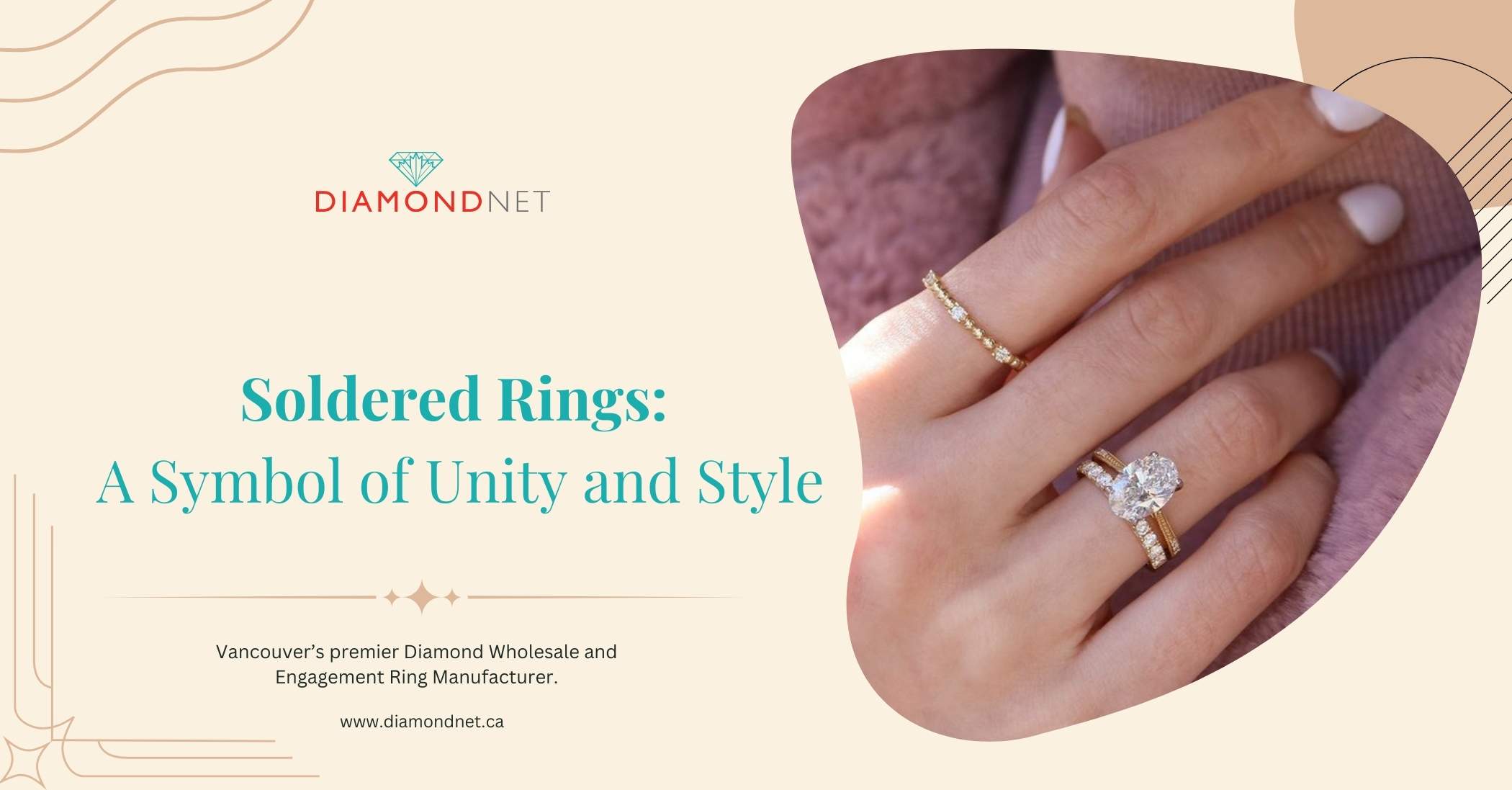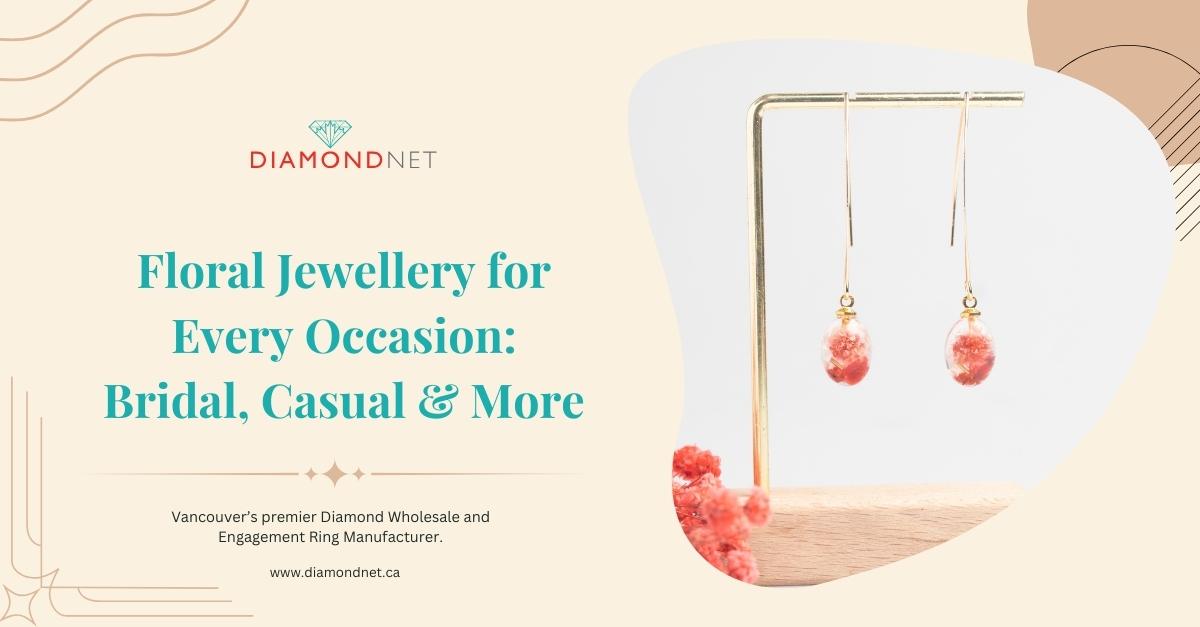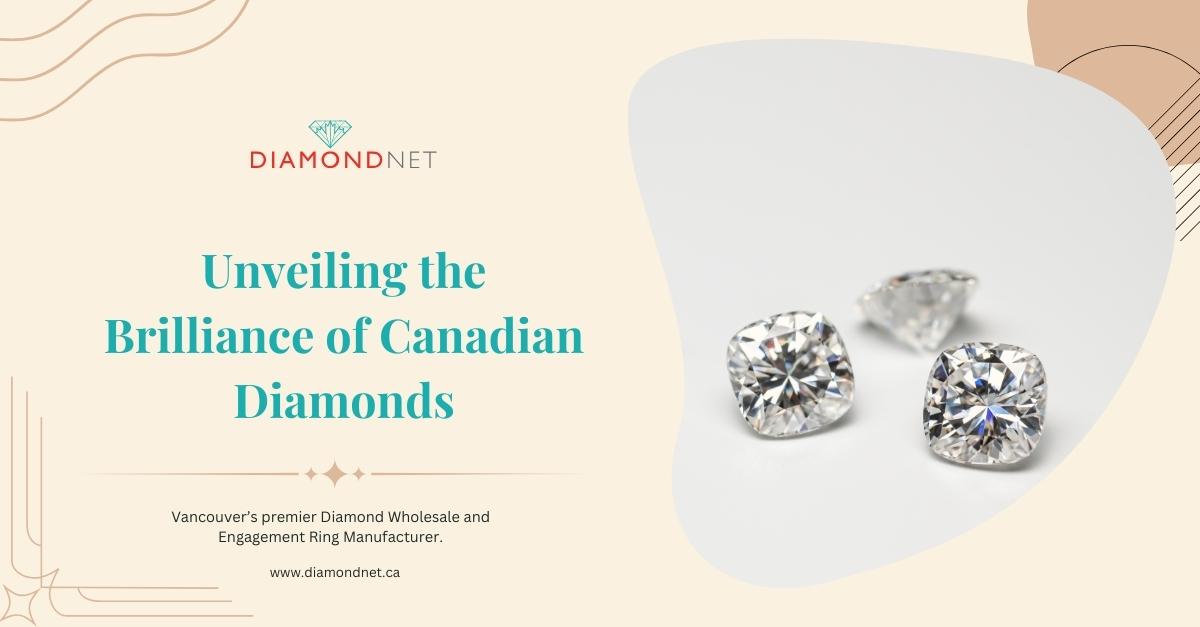Ring soldering is the process of permanently joining two or more rings—typically engagement rings and wedding bands—using heat and a specialized metal alloy. This technique creates a seamless bond, ensuring proper alignment and durability while giving the rings a polished, unified appearance.
Often chosen for bridal sets, soldering prevents rings from twisting or rubbing against each other, minimizing wear and maintaining their structural integrity over time. Whether for aesthetic enhancement or practical reasons, this process helps protect cherished jewellery, keeping it secure and beautifully intact.
What does it mean to solder rings together?
Soldering rings together involves permanently fusing two or more rings—most commonly an engagement ring and a wedding band—into a single, cohesive piece. This process ensures proper alignment, prevents shifting on the finger, and reduces friction-related wear over time.
Bridal sets are a popular choice for soldering, as the seamless bond enhances comfort and creates a refined, polished appearance. Beyond its practical benefits, soldering also carries symbolic meaning, representing the union of two lives in marriage. Whether for durability, aesthetics, or sentimentality, this process offers a long-term solution to protect and enhance your jewellery.
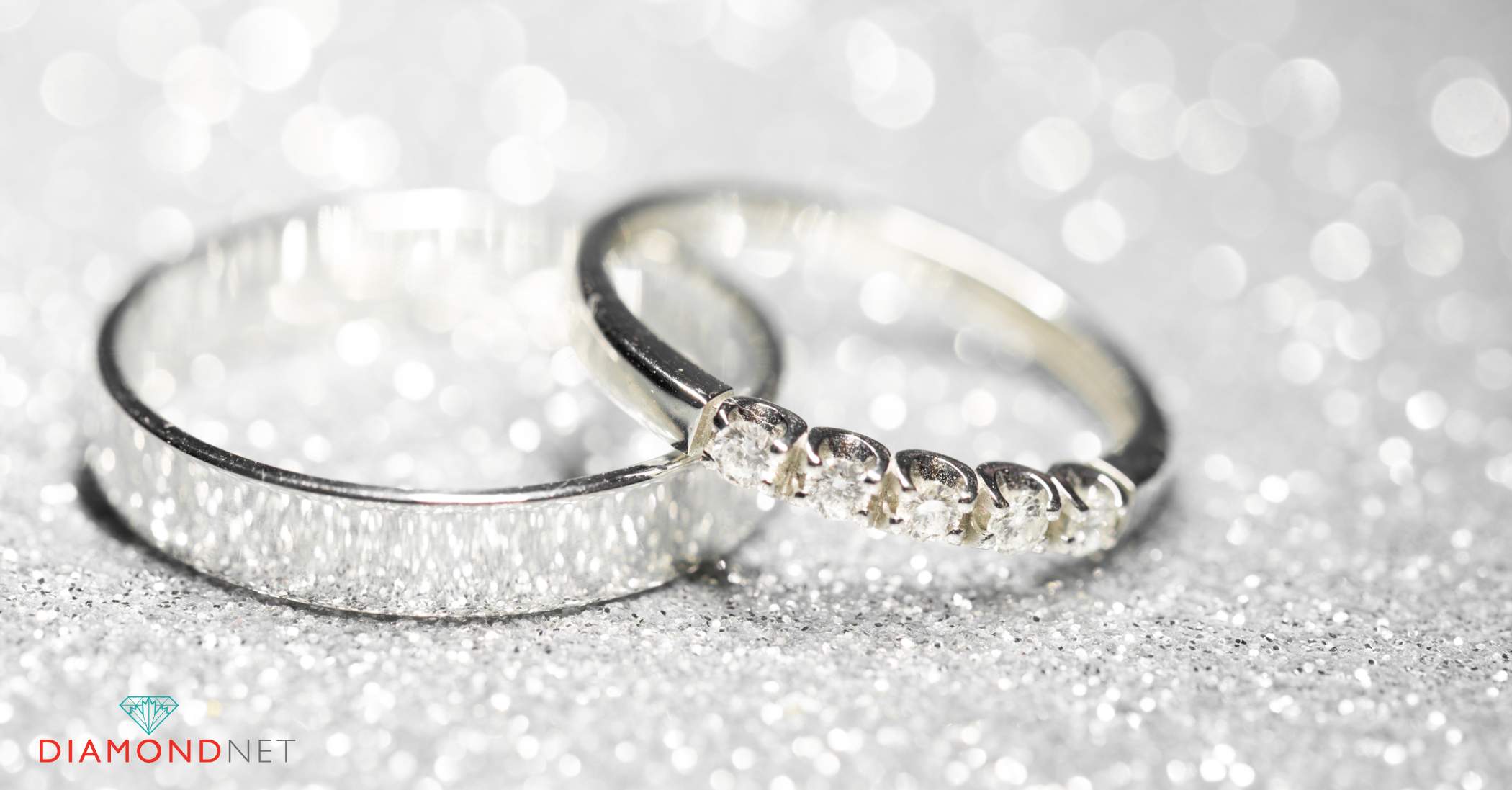
Why Soldering Your Rings is Worth Considering
Soldering your engagement ring and wedding band offers practical, aesthetic, and symbolic benefits, making it a smart choice for preserving and enhancing your bridal set.
One major advantage is improved alignment—soldering prevents rings from twisting or shifting, ensuring they stay securely in place while maintaining a seamless, polished look. Minimized wear and tear is another key benefit, as friction between separate rings can cause scratches or loosen gemstones over time. By fusing them together, you protect your jewellery from unnecessary damage.
This protection is especially valuable when considering the benefits of ethically sourced diamonds, as responsibly sourced gemstones are a lasting investment in both beauty and sustainability.
Enhanced comfort is another advantage—soldering eliminates gaps between rings, preventing pinching and making them more comfortable for everyday wear. Additionally, the process carries a deep symbolic meaning, representing the unity and commitment shared in marriage.
At DiamondNet, our expert jewellers ensure a flawless soldering process, preserving both the integrity and beauty of your rings. Whether you’re looking to enhance your bridal set, explore custom jewellery design, or maintain your cherished pieces, our team is here to help. Book a consultation today and let us create a timeless, seamless look for your rings.
Potential Drawbacks of Ring Soldering
While soldering offers many advantages, it’s important to consider potential drawbacks before making a decision.
Loss of Flexibility
Once soldered, your engagement ring and wedding band are permanently joined, meaning you won’t have the option to wear them separately. If you like switching between different styles or occasions, this could be a limitation.
Resizing Challenges
Soldered rings can be more complex to resize than separate bands. In most cases, the jeweller will need to separate the rings before making adjustments, which can add both time and cost to the process.
Heat Damage Risk
Certain gemstones—such as opals and emeralds—are highly sensitive to heat and may be at risk during soldering. At DiamondNet, our expert jewellers take special precautions to protect delicate stones, but it’s always best to discuss your ring’s specific design beforehand.
Pro Tip: Proper care is essential for maintaining the beauty of soldered rings. Following jewellery maintenance tips can help prevent issues like metal tarnishing and gemstone loosening over time.
By understanding these potential challenges, you can make an informed choice. If you’re unsure whether soldering is right for your rings, consult DiamondNet’s experts for personalized guidance and custom jewellery solutions.
Expert Tips for Successful Ring Soldering
Whether you’re considering a DIY approach or seeking professional services, proper technique is key to achieving a flawless, long-lasting bond. Follow these essential steps for a seamless soldering experience.
Can I solder rings at home?
Yes, but it requires precision, the right tools, and a solid understanding of jewellery materials. If your rings feature intricate designs or sensitive gemstones, consulting a professional is the safest option.
Ensure Proper Alignment
Misalignment can lead to uneven soldering, affecting both the look and fit of your rings. Use clamps or a secure holder to keep them steady before applying heat.
Choose the Right Soldering Materials and Tools
The soldering material must match the metal of your rings—gold, platinum, or silver—for a seamless bond. A high-quality jeweller’s torch and heat-resistant mat are essential for safety and accuracy.
Protect Heat-Sensitive Stones
Some gemstones, like opals and emeralds, are vulnerable to high temperatures. To prevent damage, use heat sinks, cover stones with a damp cloth, or apply specialized shielding techniques.
Test the Fit Before Final Soldering
Before sealing the bond, loosely place the rings together to ensure there are no gaps and that they fit comfortably on your finger. Adjust as needed before applying heat.
Seek Professional Assistance for Complex Rings
For valuable or intricately designed rings, professional expertise ensures a flawless finish and minimizes risks. Experienced jewellers can ensure your rings remain durable, comfortable, and beautifully seamless.
By following these steps, you’ll achieve a secure, stylish, and long-lasting soldered ring set. For expert assistance, consult a professional jeweller to ensure the best results for your cherished jewellery.
Exploring Alternatives to Ring Soldering
If you’re hesitant about soldering your rings, several non-permanent alternatives can provide protection and alignment while maintaining flexibility.
Ring Guards
Ring guards are thin metal or plastic bands placed between rings to keep them aligned and prevent spinning. They are affordable, removable, and easy to use, making them an excellent temporary solution for those who may want flexibility in the future.
Ring Connectors
Ring connectors offer a secure way to link multiple rings without using heat or making permanent alterations. Available in different materials, they blend seamlessly with your jewellery while providing extra stability.
Spacer Rings
Spacer rings sit between your engagement and wedding bands to reduce friction, preventing scratches and wear. Beyond protection, they can also enhance your jewellery’s look by adding decorative elements or extra width for a bolder appearance.
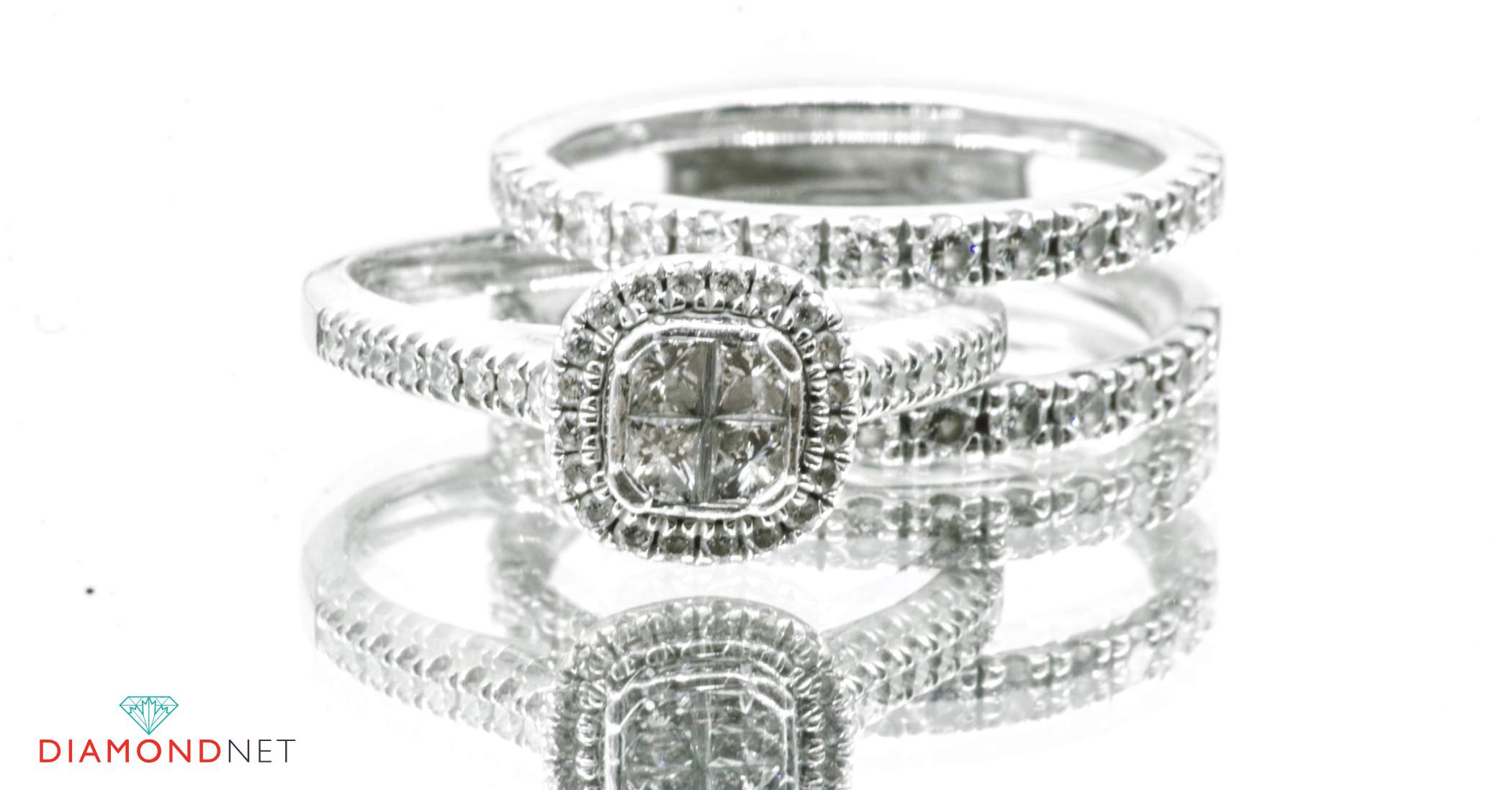
Custom Ring Solutions
For a personalized approach that enhances both aesthetics and function, consider custom ring design services at DiamondNet. Our expert jewellers can create tailored solutions that maintain your rings’ flexibility while providing a seamless, stylish look.
Conclusion
Ring soldering is a long-term solution that enhances the durability, comfort, and aesthetics of your engagement and wedding rings. By permanently joining them, it prevents misalignment, minimizes friction, and helps preserve their beauty for years to come.
However, it’s important to consider potential drawbacks such as reduced flexibility, resizing challenges, and the risk of heat damage to delicate gemstones. Fortunately, these concerns can be addressed with expert guidance and proper care.
If you’re unsure whether soldering is the right choice for your rings, consulting a professional jeweller can provide clarity. At DiamondNet, our experts offer personalized guidance and precision soldering services to ensure your jewellery remains both secure and stunning.
Book a consultation today and let us help you create a seamless, elegant look that lasts a lifetime.
